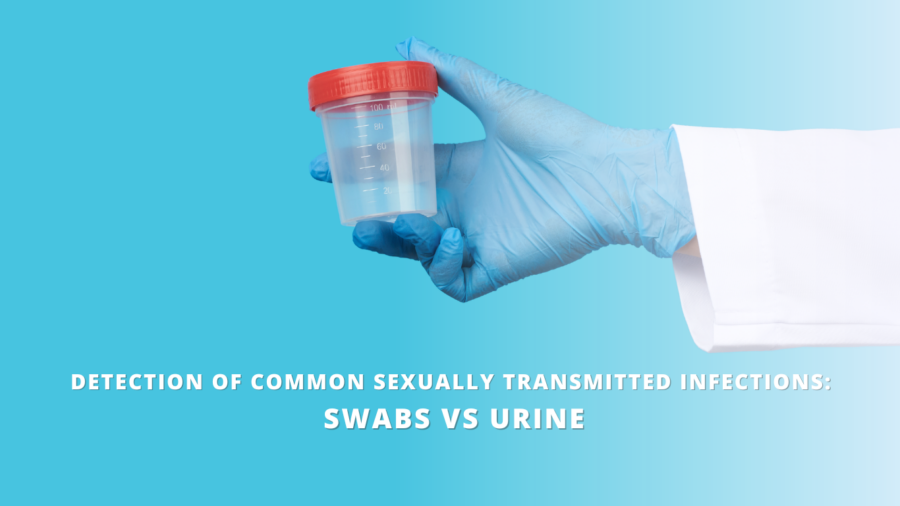Chlamydia trachomatis and Neisseria gonorrhoeae are the two most frequently reported notifiable sexually transmitted infections (STIs) in the United States and Trichomonas vaginalis, although not a notifiable disease, is the most common curable non-viral STI worldwide. Women bear a disproportionate burden of these infections and testing is necessary to identify infections. Although vaginal swabs are the recommended sample type, the specimen most often used among women is urine. While the Centers for Disease Control and Prevention (CDC) recommendations suggest that first-catch urine is acceptable for women, it may detect up to 10% fewer infections compared with vaginal swabs.1
The authors of a recent article published in the Annals of Family Medicine presented the results of a meta-analysis to assess the diagnostic sensitivity of commercially available assays for vaginal swabs vs urine specimens in the detection of important pathogens known to cause sexually transmitted infections. Specifically, the ability of different assays to identify Chlamydia trachomatis, Neisseria gonorrhoeae, and Trichomonas vaginalis, were reviewed from vaginal swabs and urine specimens collected from women.
The authors conducted a systematic search of multiple databases from the years 1995 through 2021 to identify studies that:
(1) evaluated commercially available assays;
(2) presented data for women;
(3) included data obtained from the same assay on both a urine specimen and a vaginal swab from the same patient;
(4) used a reference standard; and
(5) were published in English.
Studies that met the criteria listed above were analyzed to obtain pooled estimates for sensitivity and the corresponding 95% confidence intervals for each pathogen as well as odds ratios for any difference in performance. Specifically, 28 eligible articles with 30 comparisons for Chlamydia trachomatis, 16 comparisons for Neisseria gonorrhoeae, and 9 comparisons for Trichomonas vaginalis were utilized to obtain the following pooled sensitivity estimates for vaginal swabs and urine specimens. The pooled sensitivity estimates generated from this analysis are listed in the table below.
| Pooled Sensitivity Estimates for Pathogens in Vaginal Swabs and Urine Specimens | ||
| Vaginal Swabs | Urine Specimen | |
| Chlamydia trachomatis | 94.1% | 86.9% |
| Neisseria gonorrhoeae | 96.5% | 90.7% |
| Trichomonas vaginalis | 98.0% | 95.1% |
Evidence from this analysis supports the CDC’s recommendation that vaginal swabs are the optimal sample type for women being tested for chlamydia, gonorrhea, and/or trichomoniasis.
The findings from this study are significant. Laboratory testing is an influential tool utilized and trusted by health care providers in the diagnosis and treatment of illness in patients. The routine use of urine for screening women for Chlamydia trachomatis and Neisseria gonorrhoeae may result in downstream consequences from false-negative results and untreated infections.1 Though the difference between the use of vaginal swabs or urine showed less of a relationship in the detection of Trichomonas vaginalis than Chlamydia trachomatis and Neisseria gonorrhoeae, all three pathogens were recovered at higher percentages for vaginal swab specimens when compared with urine specimen.
Despite strong implications rendered from the study, the author states that the collection of samples can, and should, be tailored to individual needs. This recommendation accommodates complex and circumstantial needs of individual patients such as opting for a urine specimen from an individual for whom vaginal sample collection may be a triggering experience. Afterall, the complete lack of testing for sexually transmitted infections is far more impactful than adjusting specimen types collected to suit the needs of each individual patient.
At Genesis Reference Laboratories, we understand the importance of providing quality laboratory services. In addition to providing customizable ordering and accurate results with competitive turnaround times, we understand that providing alternative testing options for our clients offers additional flexibility in laboratory testing approaches. Therefore, we offer STI testing for both urine and genital swab specimens.
References
- Aaron, K. J., Griner, S., Footman, A., Boutwell, A., & Van Der Pol, B. (2023). Vaginal Swab vs Urine for Detection of Chlamydia trachomatis, Neisseria gonorrhoeae, and Trichomonas vaginalis: A Meta-Analysis. Annals of family medicine, 21(2), 172–179. https://doi.org/10.1370/afm.2942
- https://www.cdc.gov/mmwr/preview/mmwrhtml/rr6302a1.htm

